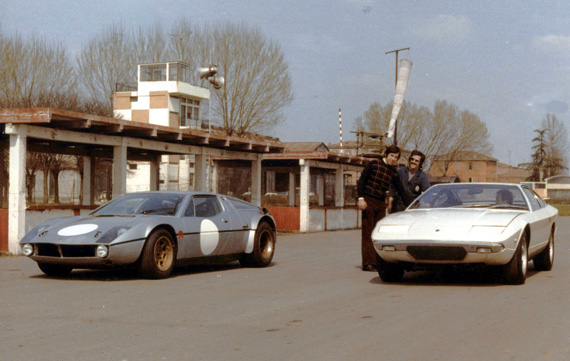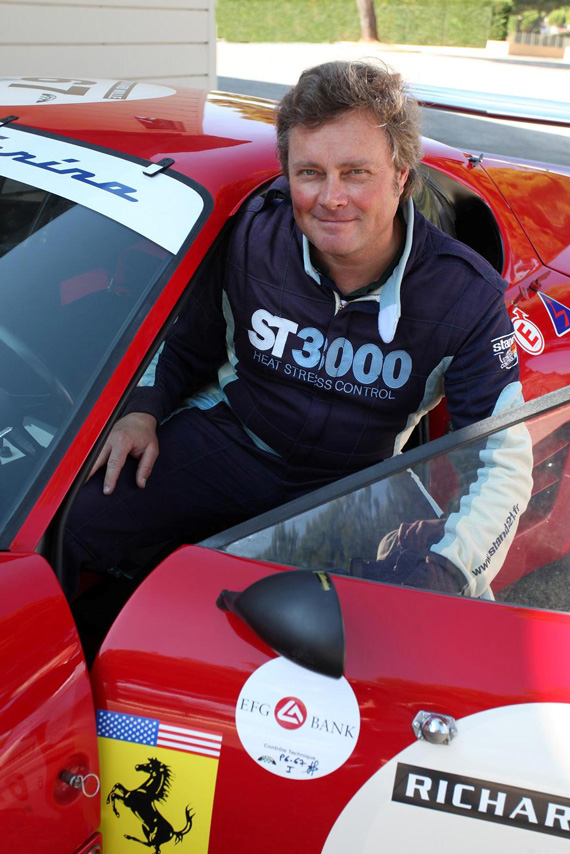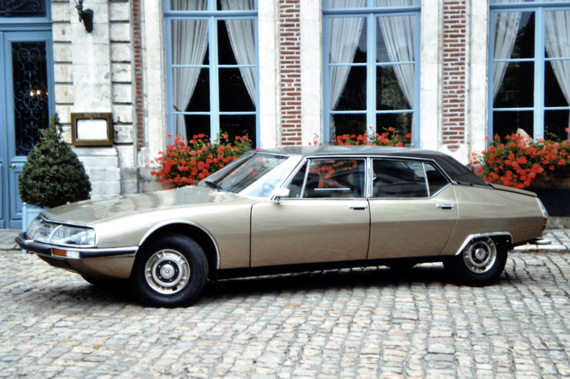Marc Sonnery
By Wallace Wyss
[We’ll have a review of the latest book by Marc Sonnery next week]
Marc Sonnery, age 48, half French and half Swedish, is a fit and well-groomed author who is ready to travel the globe in his quest to write about his favorite marque, Maserati. His name was seen in CAVALLINO for ten years, where he wrote about Ferraris, but in the 1990’s he began researching Maseratis and now spends most of his waking hours researching the history of various models. So it is that he recently authored a book on the Maserati models built when Citroen owned Maserati as well as the Citroën SM. I met with him during Sonnery’s California publicity swing and had an opportunity to do a short interview.
WYSS: This book seems to be a labor of love. How can you make money as an author?
SONNERY: As you know it is challenging, but between article revenue and auction catalog biographies you manage; just. When you have a passion like this it literally drives you and there are many tremendously enjoyable aspects which make it very worthwhile, beyond documenting history, which is key.
WYSS: Why did you choose to zero in on just the Citroen-era cars which I can say are least known in America?
SONNERY: I did not want to do a general book on all Maseratis–that is more the gift book that mothers give their sons, and there are too many of those. I realized in 2006 that the era of Maserati’s history which interested me the most was the one that was the least documented, it was an epiphany. It was very challenging to find all the people who had never been interviewed and to research those years which really had not been properly documented. It is precisely because of that lack of information in the US and in Europe that I chose to do it.
WYSS: Whenever I think of the Citroen SM, Khamsin, Bora and Merak — all produced in this period — I think “hydraulics” and fear them. Am I wrong?
SONNERY: Yes, absolutely but it is not your fault. Again the root problem is lack of information and documentation. As Jay Leno explains in the foreword he very kindly wrote, hydraulics are very reliable but the problem is that there was no information on how to service the system properly, and poor service resulted in problems. Millions of Citroëns have run on hydraulics without any issue at all as have thousands of Maseratis of that era. Like anything in a classic car, lack of use is not good, but no more for the hydraulic system in these cars than anything else. I know of an SM in Italy which has covered 500, 000 kms. There are several Khamsins which have 100,000 miles.

The Sonnery book captures the frustrations and excitement of the seventies. Here the Bora Group 4 car is on test with the Khamsin Prototype.
WYSS: I know a history book is not supposed to have a bad guy per se but in our conversations you mentioned that Guerrino Bertocchi, the technician (and very fast test driver), generated a few problems. Can you elaborate?
SONNERY: Bertocchi was a very difficult person who had been at Maserati since 1926 and therefore felt it was his turf. He was hard on his staff of production line test drivers and favored certain dealerships over others in terms of whether flaws noted by his test drivers were corrected or not before delivery. He helped himself to spare parts during the Orsi era, until Citroën’s more comprehensive accounting and also accountability brought his practices to light.
He was, however, a good if gruff unofficial PR person for the factory when he gave rides to journalists and guests. He was fired during the Paris show when giving rides in a Bora: he was caught on hidden tape advising clients to buy de Tomaso Panteras instead. This was after his son went to work there. He joined de Tomaso as well and died in a right hand drive de Tomaso Deauville (no left hand drive Deauville was available that day) when a customer unfamiliar with right hand drive cars tried to pass a truck at the wrong moment…
WYSS: And a good guy?
SONNERY: I would not put it in such simplistic terms, but amongst several who I really appreciate, there was Mr. Guy Malleret, head of Maserati for Citroën. A very discreet, hardworking man, he worked very hard to reorganize Maserati from 1968 onwards. Then after the energy crisis of ’73, he literally halted sales as he tried everything he could to save Maserati and keep it within the fold. Peugeot, who had taken control of Citroën and therefore Maserati, decided to close the doors in 1975: Peugeot would not listen to his pleas. Then de Tomaso took over. My favorite person has to be Ermanno Cozza, the factory historian, who had a 60-year career at Maserati and spent many years helping historic Maserati owners archive documents. He was tremendously helpful for my book, very self-effacing and prompt.
WYSS: I notice you have many rare pictures of one-off models in your latest book on Citroen and Maserati. What’s your theory on pictures of one-offs? Do they sell a book as well as pictures of the stock models?
SONNERY: I never thought in terms of sales. My ethos was to document that era as thoroughly as possible including the one-offs or specials such as the Bora group 4, the two Khamsin prototypes, the SM R & D test mules, and the SM V8. Yes, I wanted to leave nothing on the table and prototypes are often more interesting than plain production models.
WYSS: It seems that during this era all the world’s automakers were beset by changes in emissions and safety laws. Did Citroen and Maserati pick the wrong time to market their cars in America? Where did they fail?
SONNERY: They certainly were extremely unlucky with their timing. Few today realize and recall just how traumatic the 1973 energy crisis was: quadrupling of fuel costs, speed limits introduced in most countries, Sundays without cars in Italy for several months, the awful disfiguring bumpers on US-market Maseratis particularly the Khamsin which were as revolting as the tooth braces of that era. Thankfully, like the tooth braces, the US bumpers are gradually vanishing since they can be replaced by Euro bumpers. The emissions were very tough on a small company like Maserati as were the crash tests–that is in fact one of the reasons the Orsi family decided to sell the firm to Citroën.
WYSS: Many times a particular model of car has no fan base, no group, but once the first comprehensive book is written, they become more popular and even more valuable. For instance the first book has been done now on Intermeccanica; would you predict that now that your new book is out that there will be more fans for the Citroen-Maserati produced cars?
SONNERY: Yes. If there is no information most people – apart from the very motivated – will tend to walk away. In sharp contrast, when a proper book exists allowing you to sink your teeth into the information, then it is like a beacon in the night. I am not assuming my book is that, but the idea was to help these cars be more appreciated, embraced, and driven.
WYSS: Do you feel that a sad truth is that many buy expensive cars but don’t maintain them or understand their needs?
SONNERY: I always preferred a decent looking car that gets driven regularly over a concours trailer queen that may be shiny but doesn’t functioning properly. Some manage their cars very well while others have no clue. If you have children you feed and educate them, if you have a classic car you maintain it AND drive it; too many just sit and deteriorate.
WYSS: Was it hard to find a publisher?
SONNERY No but finding one with staying power was. The first two, an Englishman and a French one went out of business so I had to find a third one and very luckily Doug Blair of Eau Rouge Publishing who had contracted me for another book jumped in and saved the day. He owns a Khamsin and other Maseratis of that era so for him the book was a labor of love as well. It would have been much smaller in every way without his desire to see it reach its full potential, so thank you Doug.
WYSS: You owned one of these cars too?
SONNERY I had a Khamsin a few years ago, absolutely loved it, but had no choice but to sell my baby. I think it is one of the greatest cars of the 20th Century, far, far better than the Ferrari Daytona which had heavy steering, heavy clutch, and poor brakes. It is a fact that a 5-speed Euro Khamsin will be faster and also more agile than a Daytona on any circuit except Le Mans, Spa, or Elkhart Lake. Even a tiny lady can drive it in the worst traffic jams thanks to the hydraulic controls. They have the charisma of a 60’s hairy-chested macchina but the practicality of an 80’s car; most journalists did not drive them long enough to get used to them but once you do, they are fabulous, and it was truly far ahead of its time. I suggested to Jay Leno that he drive the Khamsin of a friend for his Jay Leno’s Garage web show and he did do it in May.
WYSS: On the bad guy-good guy continuum, where did you put DeTomaso? When I did a book on him, I couldn’t find anybody to say a good word about him. He was Machiavellian in the extreme. This contrasted to Shelby, who I wrote three books about; some people liked him, some hated him, but at least he has his fans.
SONNERY: I never met deTomaso, but unfortunately I had the same experience from interviews I have gathered. He could be pleasant enough when alone with someone but as George Garbutt, former head of Maserati USA during that era said, he would find some excuse to vehemently shout at an employee just to let others present know he was not to be taken lightly. He often did that when people came to meet him for the first time. Many quit Maserati when he took over.
WYSS: What is the next book about?
SONNERY: The de Tomaso Mangusta actually. So I guess I will be finding out more about Signor DeTomaso’s personality! The Mangusta never got the coverage it deserves so it is a thrill to do this. As you know, 95% of what has been written on de Tomaso has been about the Pantera which is wrong.
WYSS: Where can we order the new book Maserati the Citroën years 1968-1975?
SONNERY: Not via some of the major book sites who advertised it without my publisher’s consent, they have no inventory; but very easily and securely with excellent sturdy packaging directly from my publisher at www.eaurougepublishing.com, or directly on our dedicated website: www.maserati-book.com


I did my part in beautifying the world by replacing the rubber bumpers on my Merak SS with stainless Euro bumpers.
I believe Francis Mandarano probably retired on that particular project of mine.